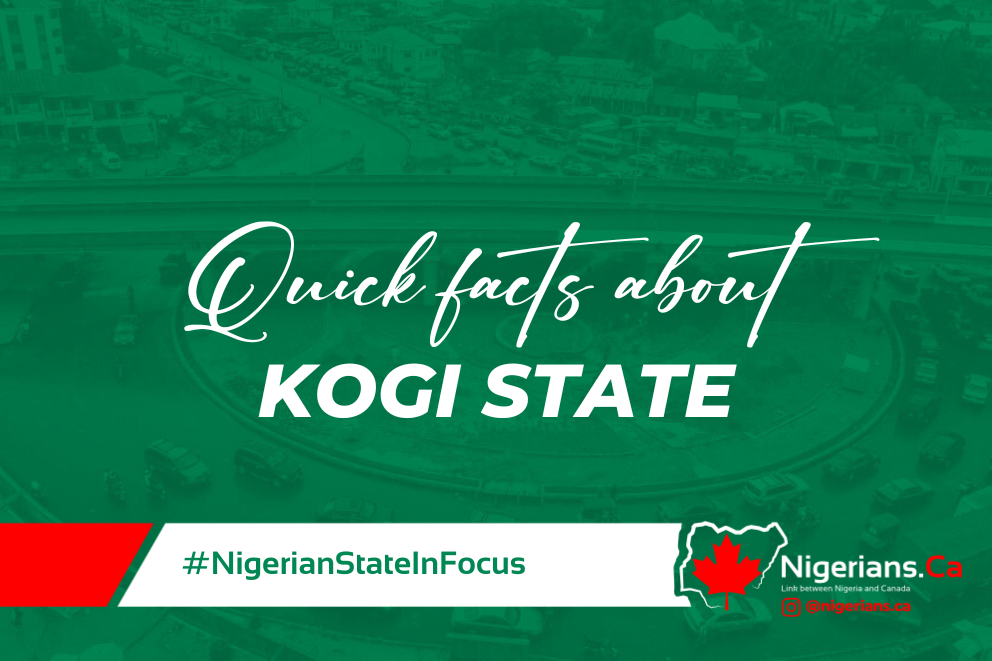Kogi State is a state in the North Central region of Nigeria. It was created in 1991 from portions of eastern Kwara and western Benue states.
Kogi is bordered by the states of Nassawara to the northeast; Benue to the east; Enugu, Anambra, and Delta to the south; Ondo, Ekiti, and Kwara to the west; and Niger to the north. Abuja Federal Capital Territory also borders Kogi to the north.
The Igala peoples are the main ethnic group east of the Niger, while the Igbira and Yoruba live west of the river.
Unknown to many, the name of country - ‘Nigeria' was coined in Lokoja, the kogi state capital by Flora Shaw; the British journalist who later became the wife of Lord Lugard (first governor general of Nigeria), when she was gazing at the magnificence of the greatest river in Nigeria, the river Niger.
Many analyst believes the nickname of Kogi state should have been the ‘junction state’ by virtue of the fact that kogi state connects/has a boundary with the highest number of states in Nigeria. 10 states Anambra, Enugu, Benue, Nasarawa, Niger, Kwara, Ekiti, Ondo, Edo states and the FCT are all joined together by this great state.
Kogi state houses a very remarkable handwork of mother nature -The confluence of the two greatest rivers that run across Nigeria, the River Niger and River Benue in the city of Lokoja.
The multi-billion dollars steel and iron industry, the largest of it’s kind in Nigeria; The Ajaokuta Steel and Iron industry was established in 1971 in Kogi state on a 24,000 hectare land. This industry is viewed as a potential bedrock for the industrialization of Nigeria.
Lokoja the Kogi state capital was the first administrative centre of Nigeria because it was the first settlement of the british in Nigeria. It served as the first capital of the old northern protectorate and even after amalgamation of the northern and southern protectorates it also remained the administrative centre for a while.
Kogi state is one state where it is extremely difficult to determine between muslims and christians who are more in population. Take for instance the Okun people in the state are predominantly christians, the Egbirra people are predominantly muslims while the Igalas, the largest tribe in the state are somewhat 50/50.
Kogi state is also well known for its tourist attractions, some of which are:
- The late Ohinoyi of Egbirra palace, an ancient and modern architectural wonder.
- The Inikpi statue built in memory of Inikpi, the daughter of the first Attah of Igala kingdom who was buried alive on the instruction of the Oracle to restore peace and freedom in the land.
- Iron of Liberty which marks the spot where slaves that were rescued from slave traders were set free.
- The confluence of River Niger and River Benue.
- Osome Falls located in Ukpogo. Osome is a stream that makes its way through rocks of different heights before sharply descending in a valley about 50 metres below. The sound the water makes when it hits the ground below can be heard from about 100 meters away.
- Mount Patti, Lokoja which is a massive hill towering Lokoja. The Confluence point of Rivers Niger and Benue can be seen from the flat top.
- Holy Trinity school Lokoja. This school was established in 1860 by Bishop Ajayi Crowther. It is the first primary school in Northern Nigeria.
- Awo tunnel, a former refuge for the royal family in times of war dug during the reign of Onoja Obari. It is about 1 kilometer long.
- Lord Luggard’s first residence and office in Nigeria.
- European colonial cemeteries.
- World war cenotaph
- Agbaja plateau.
- Eganja warm spring
- Royal Niger company flag e.t.c.
Agriculture is the mainstay of the economy. There are many Farm produce from the state notably coffee, cocoa, palm oil, cashews, groundnuts, maize, cassava, yam, rice and melon.
Mineral resources includes coal, limestone, iron, petroleum and tin. The state is home to the largest iron and steel industry in Nigeria known as Ajaokuta Steel Company Limited and one of the largest cement factories in Africa, the Obajana Cement Factory.





